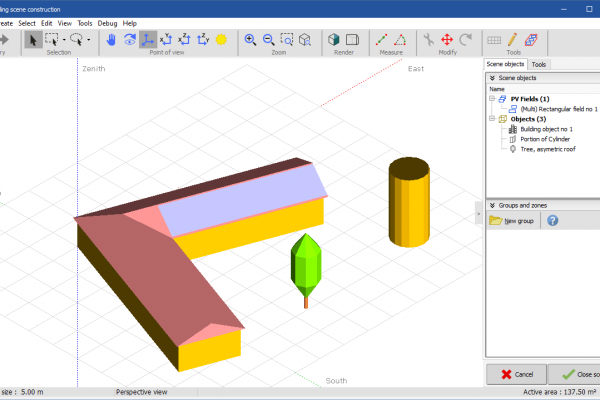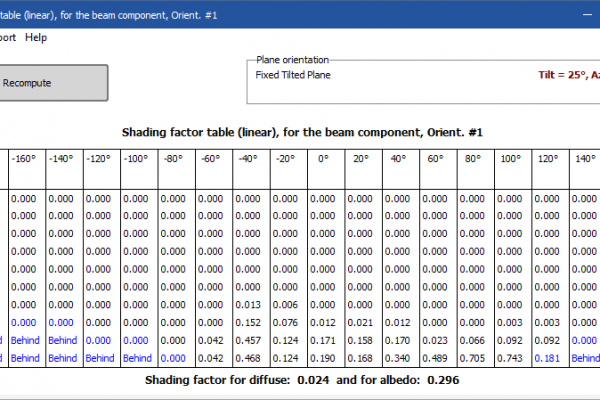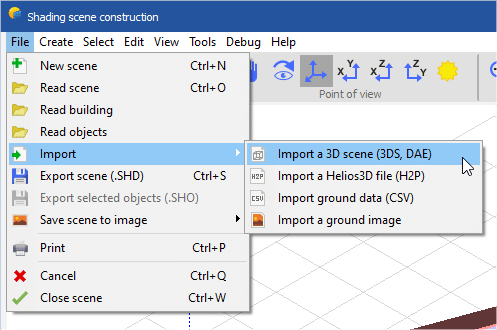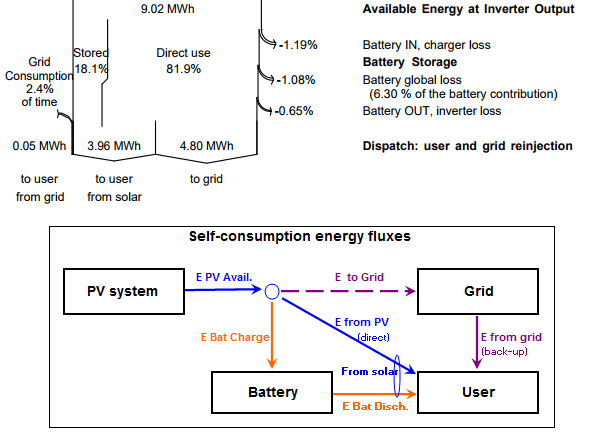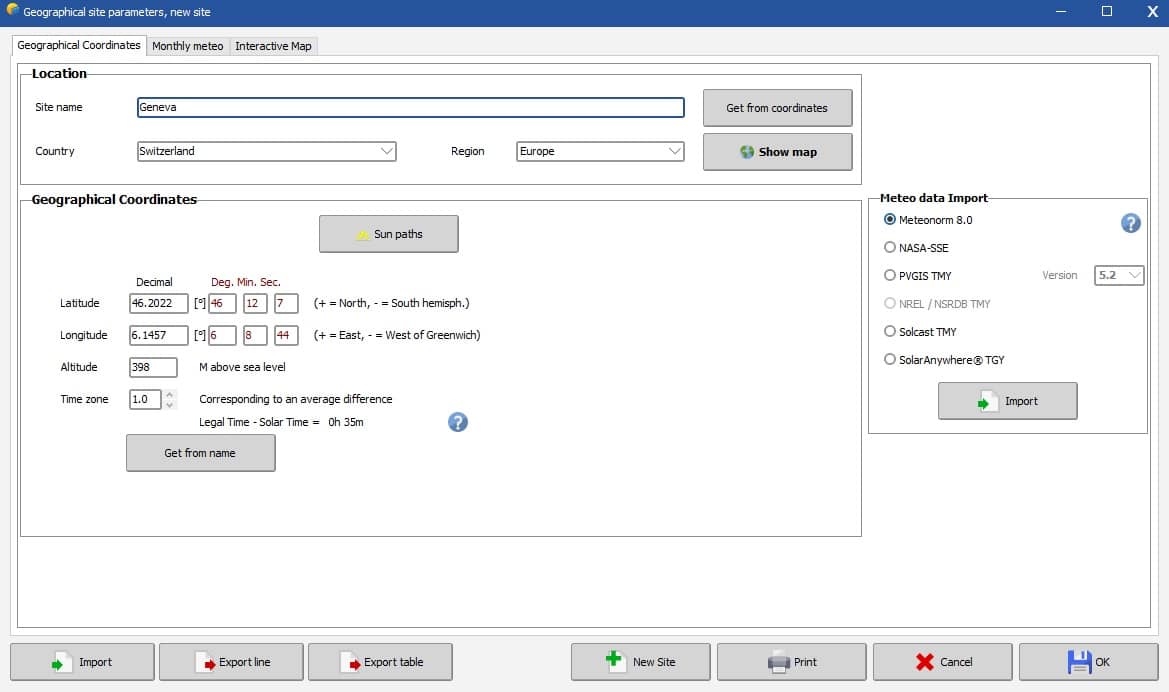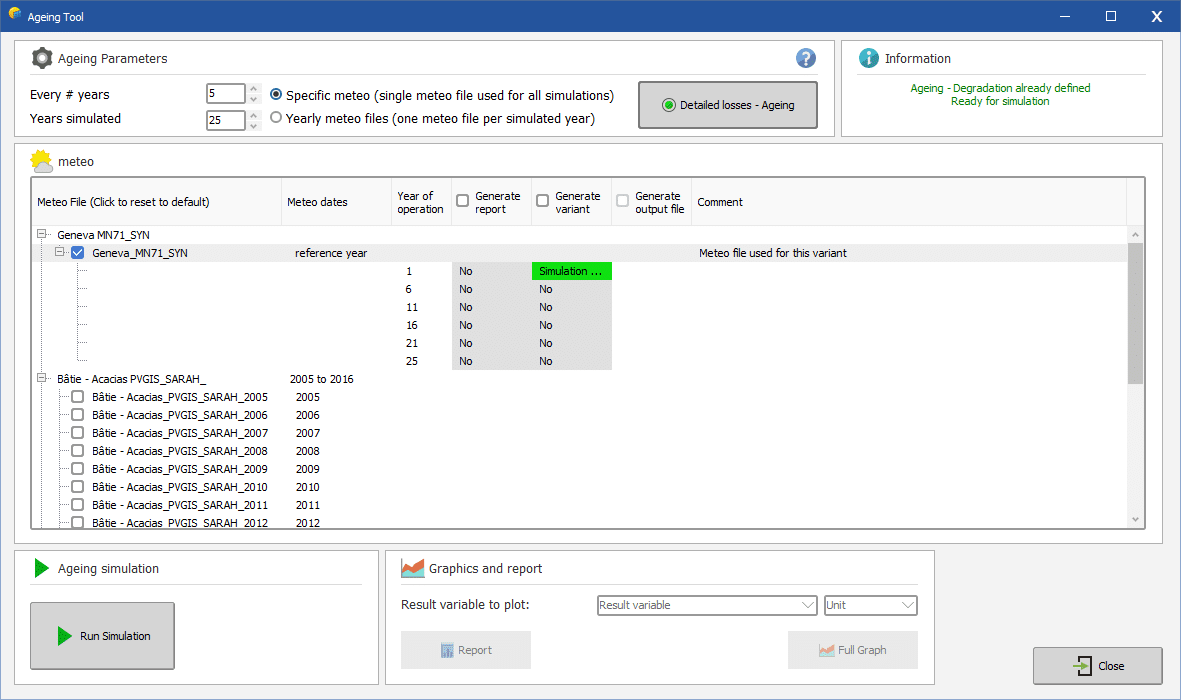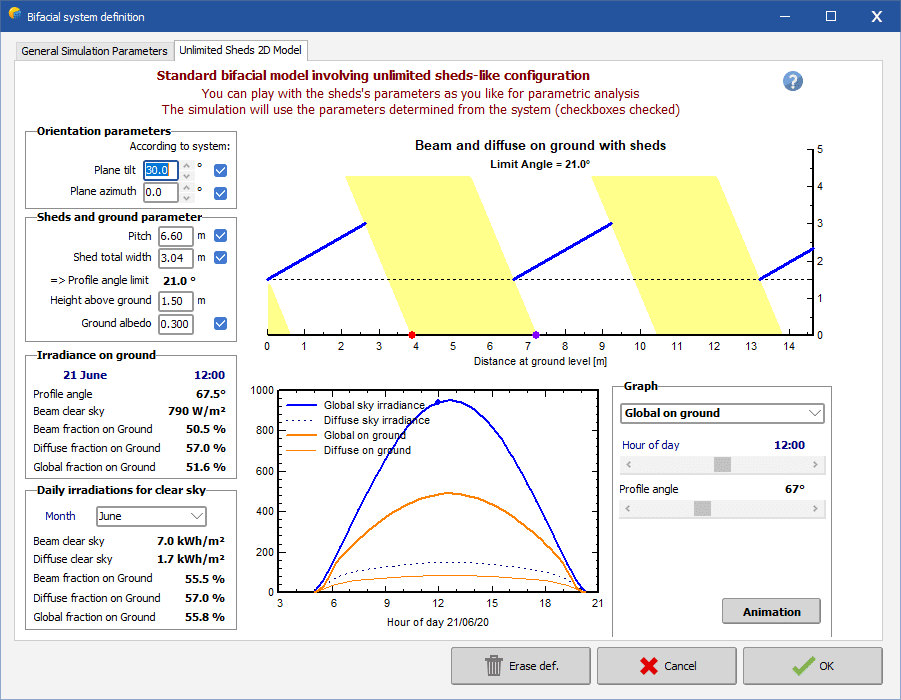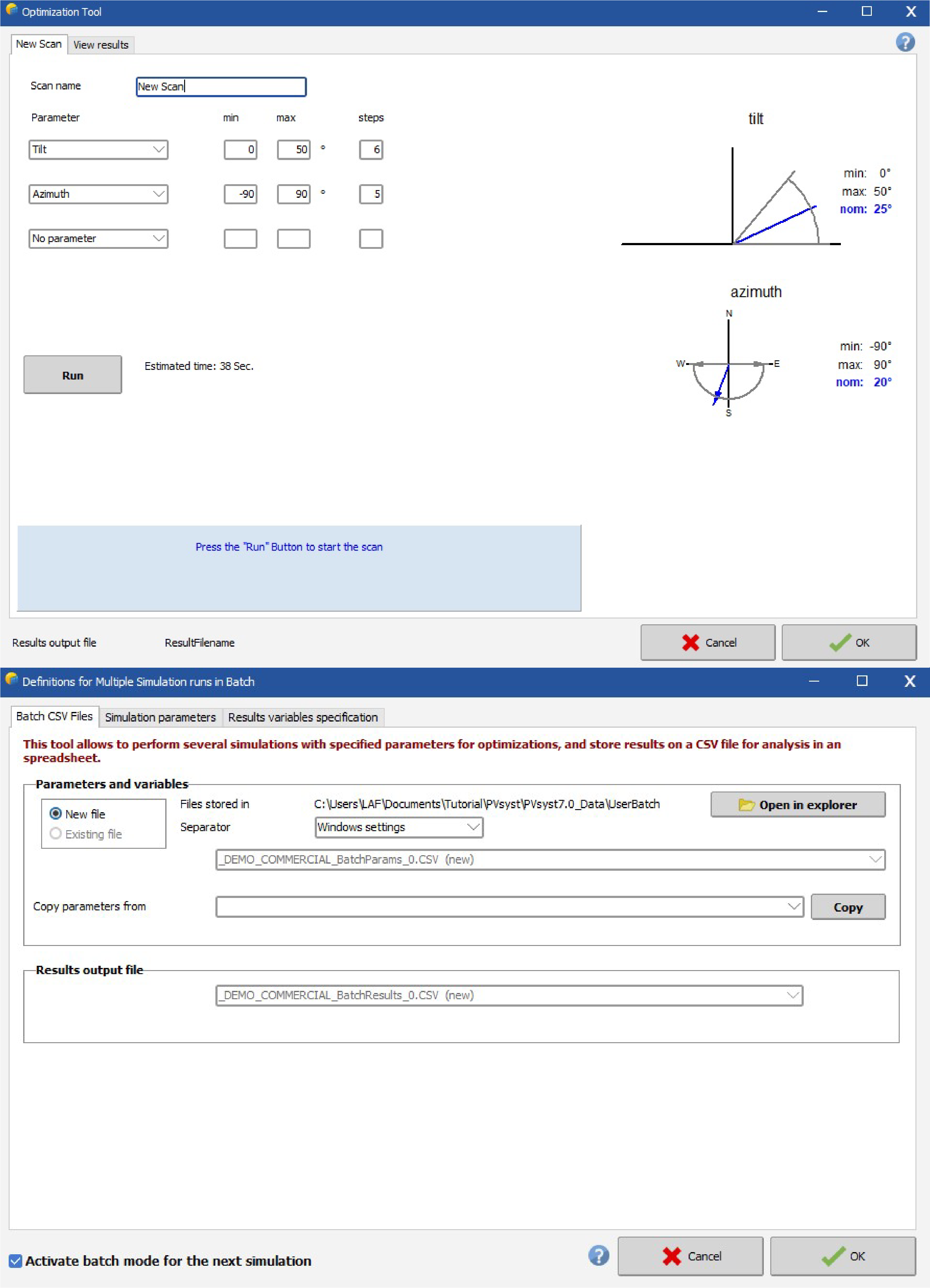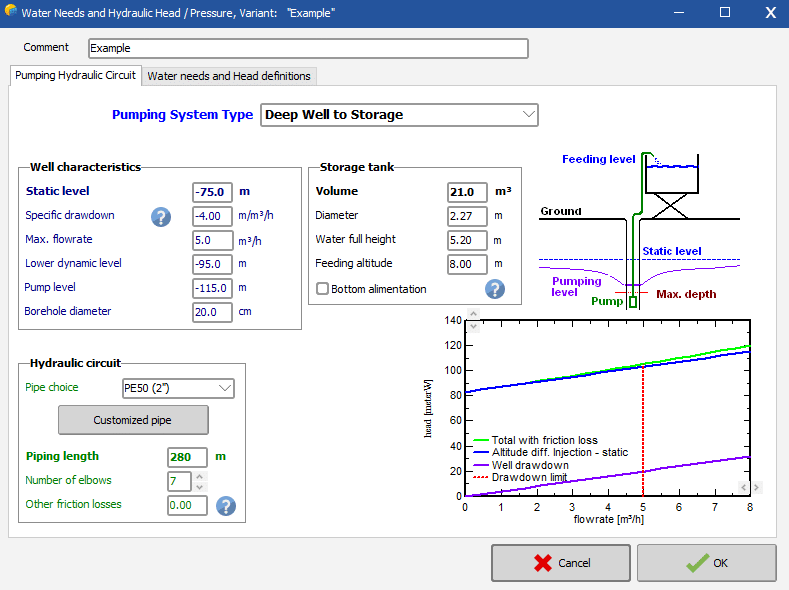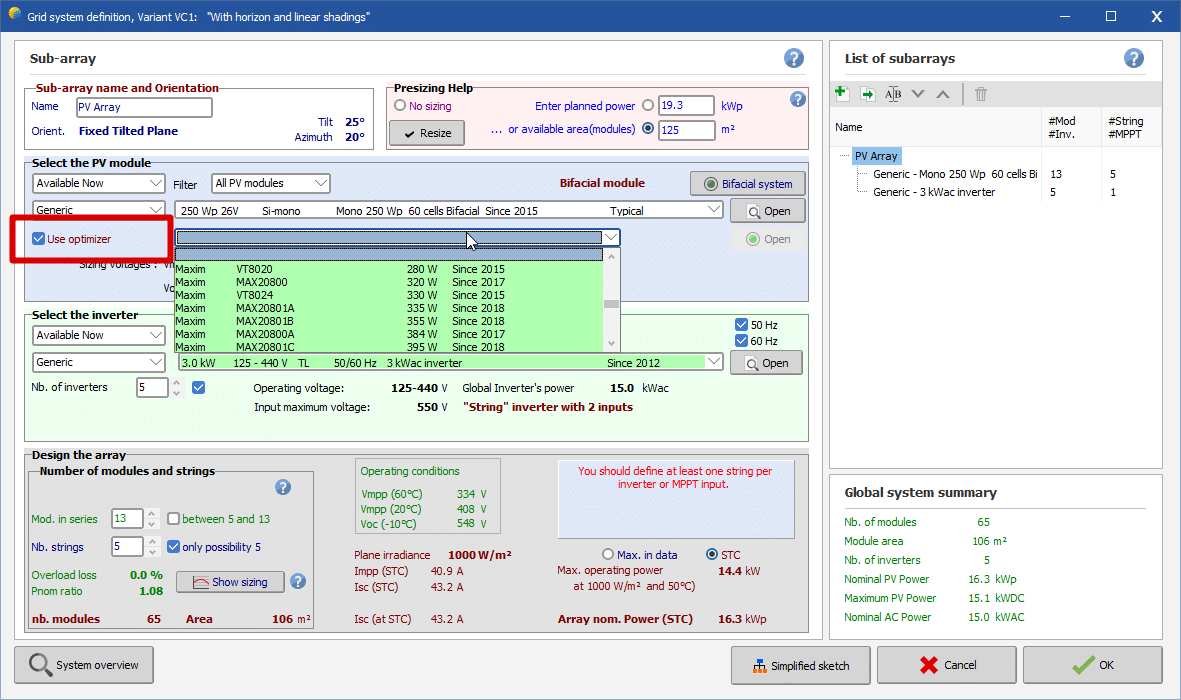The system design is based on a quick and simple procedure:
- Specify the desired power or available area
- Choose the PV module from the internal database (pull-down menu)
- Choose the inverter from the internal database (pull-down menu)
PVsyst will suggest an array/system configuration, that allows you to conduct a preliminary simulation.
The software includes a color-coded warning / errors messaging system. If there’s a mismatch, an issue or a warning with your design, you will be informed accordingly within the corresponding frame/window.



